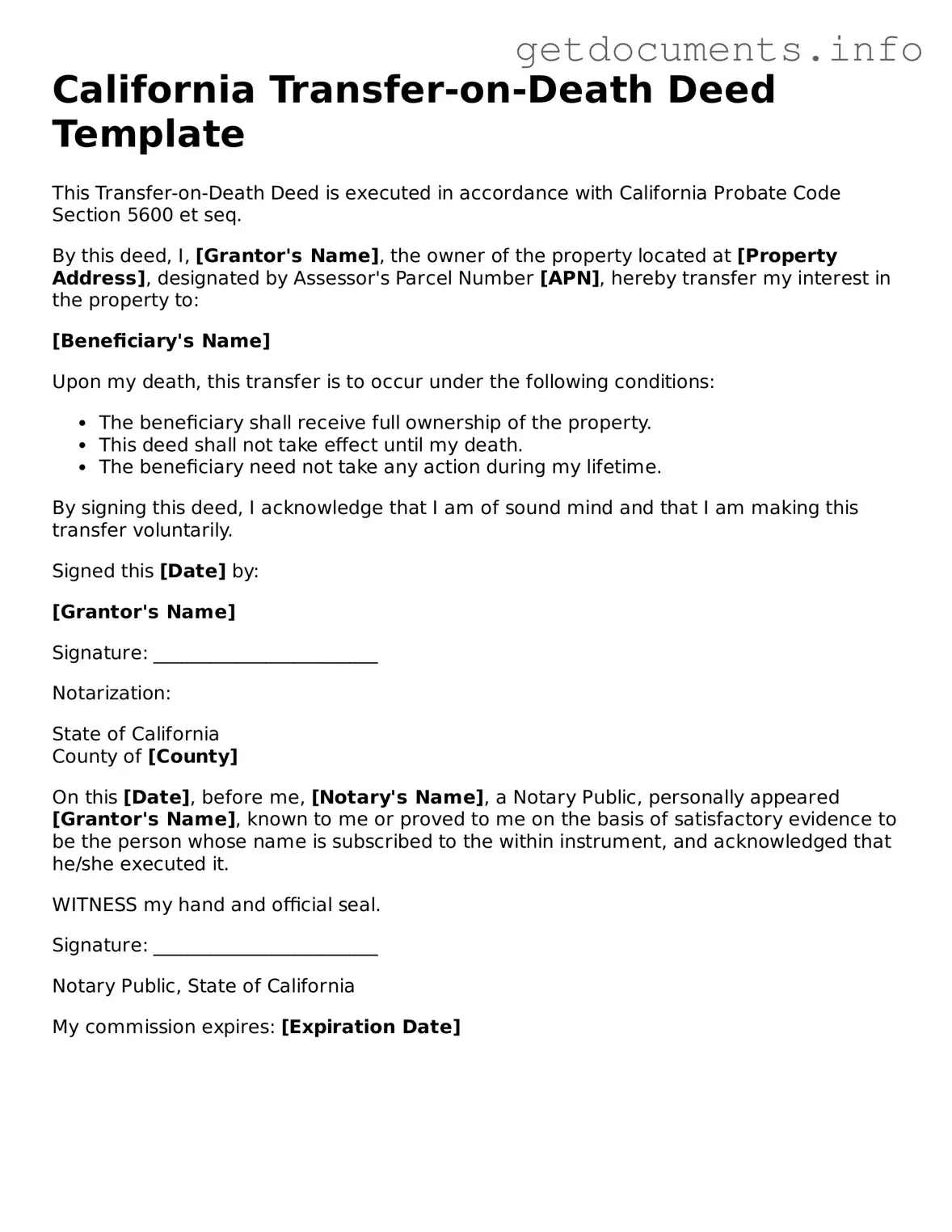Free Transfer-on-Death Deed Template for California
The California Transfer-on-Death Deed is a legal document that allows property owners to transfer their real estate to a designated beneficiary upon their death, without the need for probate. This form provides a straightforward way to ensure that your property passes directly to your loved ones, simplifying the process and potentially saving time and money. If you're considering this option, you can start by filling out the form by clicking the button below.
Access Transfer-on-Death Deed Editor
